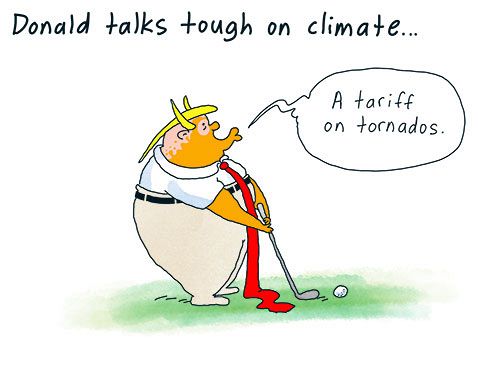There is an abundant supply of oil on the global market but despite a lack of demand, producers will not lower prices in order to stay in business, writes Patrick Drennan.
WINTER IS THE highest-demand period for oil and natural gas. However, despite severe cold snaps and larger petrochemical feedstock requirements, oil demand in America only rose by about 1% in January 2025. The overall rate is declining.
Consumers want the oil prices to drop, and American President Donald Trump echoed that in a speech to the World Economic Forum in Davos. However, the oil barons who bankrolled Trump’s election do not want that, nor does the expanded Organisation of Petroleum Exporting Countries (OPEC+).
OPEC+ (Saudi Arabia, Russia, Iraq and the UAE) sets the oil price by controlling how much oil it releases onto the international market. In his speech, Trump made veiled threats against OPEC+, but he has limited leverage over them.
American oil
The U.S. produces about 20% of the world’s crude oil, but exports most of it overseas to be refined in China, Mexico and Canada. American producers haven’t built a major refinery in the United States since 1977 (although they have upgraded some existing ones).
The surge in American oil production over the past few years has not increased demand.
China and Europe require less oil. China's economic slowdown, booming electric vehicle sector and large government subsidies for EVs are impacting its demand for oil.
In Europe, the contribution of renewable energy sources continued to increase. Renewables already surpassed solid fossil fuels in 2018 and 2019 and gained further ground in 2020 and 2022. Germany is Europe’s largest oil consumer. Overall, oil consumption in Germany has been decreasing since 1997.
American oil production is mainly shale-fracked oil, which is more expensive to produce than conventional oil drilling by overseas competitors. This is exacerbated by surging conventional oil supply from non-OPEC+ producers Guyana, Canada, Angola and Brazil.
Once oil falls below the $70 West Texas Intermediate oil price per barrel, it is not profitable for American oil companies to drill.
Reuters reported:
‘Roughly half the Texas and New Mexico-based oil executives surveyed by the Dallas Fed in December said they were using $70-$75 a barrel for capital planning.’
Another Reuters article stated:
‘...lower U.S. oil and gas prices over the past couple of years prompted energy firms to focus more on paying down debt and boosting shareholder returns rather than raising output.’
Commodity experts at Standard Chartered have predicted that drilling will remain subdued in 2025, primarily because oil prices remain too low in real terms to justify expansion during a period of significant cost inflation.
Tariffs
U.S. tariffs on Mexican and Canadian oil by the Trump Administration – and counter tariffs – would definitely raise oil prices for American consumers. It is difficult for Mexico and Canada to divert their oil to other markets, but it is not inconceivable — Mexico has a head start.
American-centric nationalists often ignore the fact that countries can simply divert their trade away from a volatile American market. For example, Australia imports 13% of its oil from America, 34% from Malaysia and 15% from Brunei. Australian companies may seek the less troublesome Asian markets for future contracts.
Meanwhile, Russian President Vladimir Putin certainly does not want oil prices to decrease further. Russia produces about 13% of the world’s oil. He needs world prices where they are now to continue to fund the war in Ukraine.
According to the Institute for the Study of War:
‘Falling oil prices would decrease Russia's federal budget revenues and risk destabilising the Russian regime’s stability...’
Russia discounts and sells some of its new oil production to India, the world’s only growing market, at about $60 a barrel margin, despite an agreement with OPEC+.
In short, there is a glut of oil on the international market and an ongoing lack of demand. Oil producers worldwide, including in America, are bound to keep the price high, just to stay in business.
Patrick Drennan is a journalist based in New Zealand, with a degree in American history and economics.
 This work is licensed under a Creative Commons Attribution-NonCommercial-NoDerivs 3.0 Australia License
This work is licensed under a Creative Commons Attribution-NonCommercial-NoDerivs 3.0 Australia License
Support independent journalism Subscribe to IA.

Related Articles
- Oil wars: Money and power are more important than climate action
- New oil and gas well investment stalls as prices nosedive













